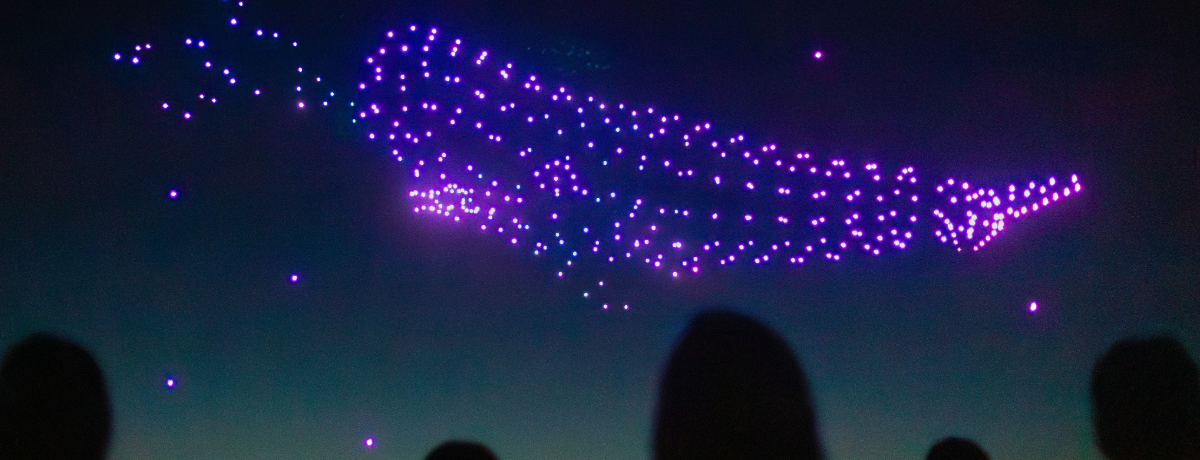
Dancing Drones and the Mathematics That Make Them Work
Let's talk about something truly magical—how mathematics transforms into those spectacular drone light shows that light up our skies. Have you caught a glimpse of Disney Springs’ latest nighttime marvel, “Disney Dreams That Soar”? It’s an entire show crafted with drones, illustrating beloved Disney characters as they 'fly' through the air, all thanks to some serious tech and math wizardry.
But before we explore Disney’s extravaganza, let’s look at something a bit closer to our educational roots: COMAP’s HiMCM problem centered on creating drone clusters for sky light displays.
COMAP’s HiMCM Problem: Drone Clusters as Sky Light Displays
This 2017 HiMCM math modeling contest problem was no small feat. It tasked teams with designing a show that could dazzle at a city festival using only drones, with requirements for three specific designs: a Ferris wheel, a dragon, and a wildcard of the team's choice.
Imagine being given hundreds of drones and the task of mapping out exactly where each should be to choreograph their dance in the sky. This is where the math comes in. Teams had to calculate not only the number of drones needed but their precise positions in 3D space to form each image. They transitioned from broad sketches to detailed, drone-by-drone choreographies using tools like DESMOS.
This challenge shows that math isn’t just numbers on paper; it’s a powerful tool to bring imagination to life. Precision is key—misplace one drone, and your dragon might end up looking more like a duck!
Download and try the HiMCM Drone Clusters as Sky Light Displays problem. It’s available for everyone with a free COMAP membership.
Learn more about the HiMCM and MidMCM math modeling contests for high school and middle school students.
Disney’s Dazzling Drone Display
Now, how does this tie back to Disney’s new drone show? Just like our HiMCM participants, Disney’s team used complex math models to ensure 800 drones could assemble and depict characters like Baymax towering over the audience. The show isn’t just a technical feat; it’s an orchestrated performance where every drone plays its part, all coordinated by mathematical principles to ensure each drone is exactly where it needs to be, when it needs to be there.
What’s really cool is thinking about the behind-the-scenes math that makes these shows possible. It involves trajectory planning, spatial geometry, and a lot of creative problem-solving. Both COMAP’s problem and Disney’s show highlight how math can create experiences that connect with people emotionally and visually.
Math in Motion: Making Magic Happen
For those intrigued by how math can literally light up the world or just discovering more about how drones work, dive deeper into drone technologies by exploring the Drones and You site from NASA. Whether you’re into the math, the tech, or the creative aspects, there’s something for everyone in the field of drones.
So, next time you find yourself mesmerized by a drone light show, remember the vast amount of mathematical planning that went into it. It’s not just entertainment; it’s a perfect illustration of how abstract math concepts find concrete expression, transforming calculated data into captivating aerial entertainment.
Written by
COMAP
The Consortium for Mathematics and Its Applications is an award-winning non-profit organization whose mission is to improve mathematics education for students of all ages. Since 1980, COMAP has worked with teachers, students, and business people to create learning environments where mathematics is used to investigate and model real issues in our world.
